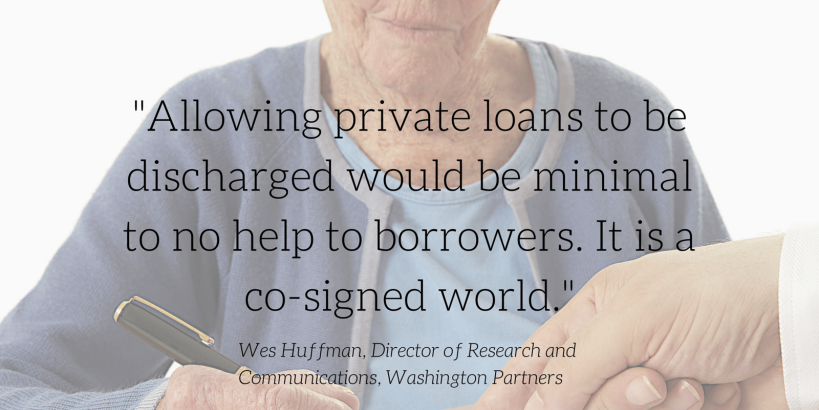Would allowing private students to be discharged in bankruptcy really solve the problem?
The CFPB (as well as just about anyone else who thinks about student loans on a regular basis) recognizes that the private student loan market is a lion’s den for students who need to borrow for higher education.
The loans come with higher interest rates, offer none of the programs for income-based repayment or forgiveness of their federally-guaranteed counterparts, and, consequently, suffer a higher rate of default.
Student borrowers, meanwhile, are faced with an ever-increasing cycle of collection activities culminating in lawsuits, judgments and enforcement mechanisms such as wage garnishment and bank account levies.
What’s to be done?
One recommendation set forth by the CFPB is that Congress amend the bankruptcy code to allow borrowers to discharge their student debts without the need for a separate judicial determination.
But the consumer watchdog stops short of recommending an across-the-board discharge of private student loans. After all, the agency recognizes that the big banks aren’t going to let that slide without a major fight.
Instead, the CPFB suggests that private student loan lenders be offered a choice – offer flexible repayment options or face discharge of the debt in bankruptcy.
In some ways, this attempt to force a project akin to the loss mitigation procedures offered for mortgage claims in some areas (most notably the program created in New York City, which works quite well) is interesting and possibly of great value.
Bringing the lenders to the proverbial table will allow student borrowers to level the playing field, something not currently possible in large measure because private student loans are securitized.
Just try to get someone on the phone with decision-making powers when it comes to a private student loan. The only way to do it is to wait until the lender sues you – at least then you’ll be able to get a lawyer who represents the securitized trust on the line.
When the story circulated on Twitter, Wes Huffman, director of research and communications at Washington Partners, stated that, “
And in a single tweet, Huffman nailed it. The white elephant that’s been standing in the middle of the room the whole time.
All across the country are millions of parents, grandparents, uncles, aunts, and friends who cosigned for someone else’s private student loans. Those loans are given partially on the basis of credit score and ability to pay, and students routinely turn to others as guarantors and cosignors.
When the student finishes school and is unable to get a job that pays enough to repay the loans, the cosignor is left holding the bag. The student is struggling to pay the rent each month on a barista’s salary, so he or she is less likely to be concerned with the negative impact of nonpayment on a credit score.
The cosignor, on the other hand, has more to protect. We’re talking about wages, real estate, bank accounts, and a need to maintain a good credit score in order to finance future purchases.
Now you see why discharging a private student loan in bankruptcy is a problem. Even if the borrower gets relief, there’s no protection for the cosignor.
Perhaps what we need to do is not only bring this new loss mitigation and dischargeability procedure into bankruptcy court, but require that such procedures expand and extend the effect of the modification or discharge to coborrowers much in the way that the community discharge protects married couples in community property states.
Such expansion would help not only coborrowers of private student loans, but those who are jointly obligated on other unsecured debts as well. Credit cards and personal loans, to say nothing of mortgages and car loans, carry the same risks in bankruptcy – the person who files for bankruptcy gets the benefit, the coborrower is left holding the bag.
It’s time for consumer protection laws to reflect the dynamics of today’s cosigned world.
